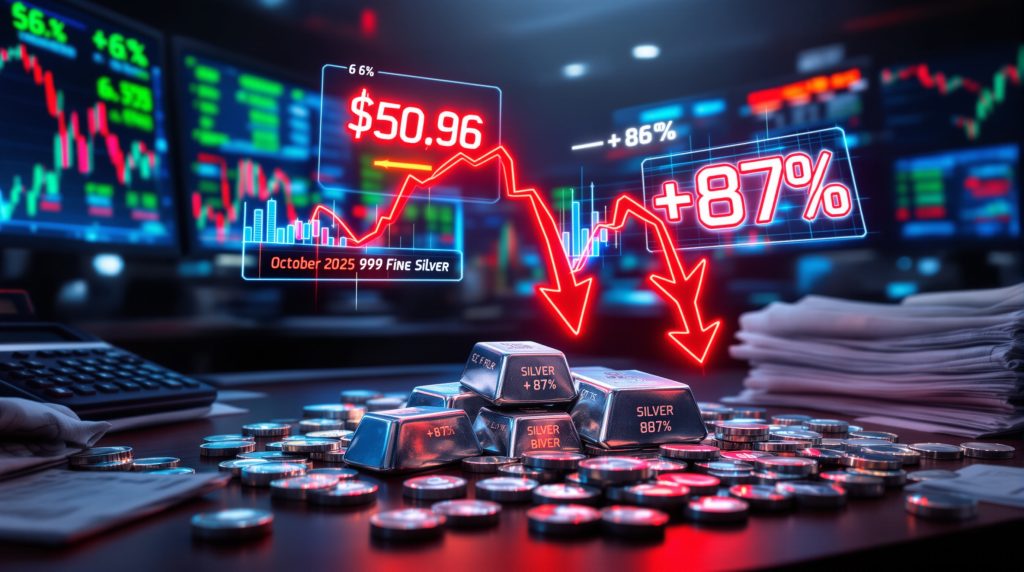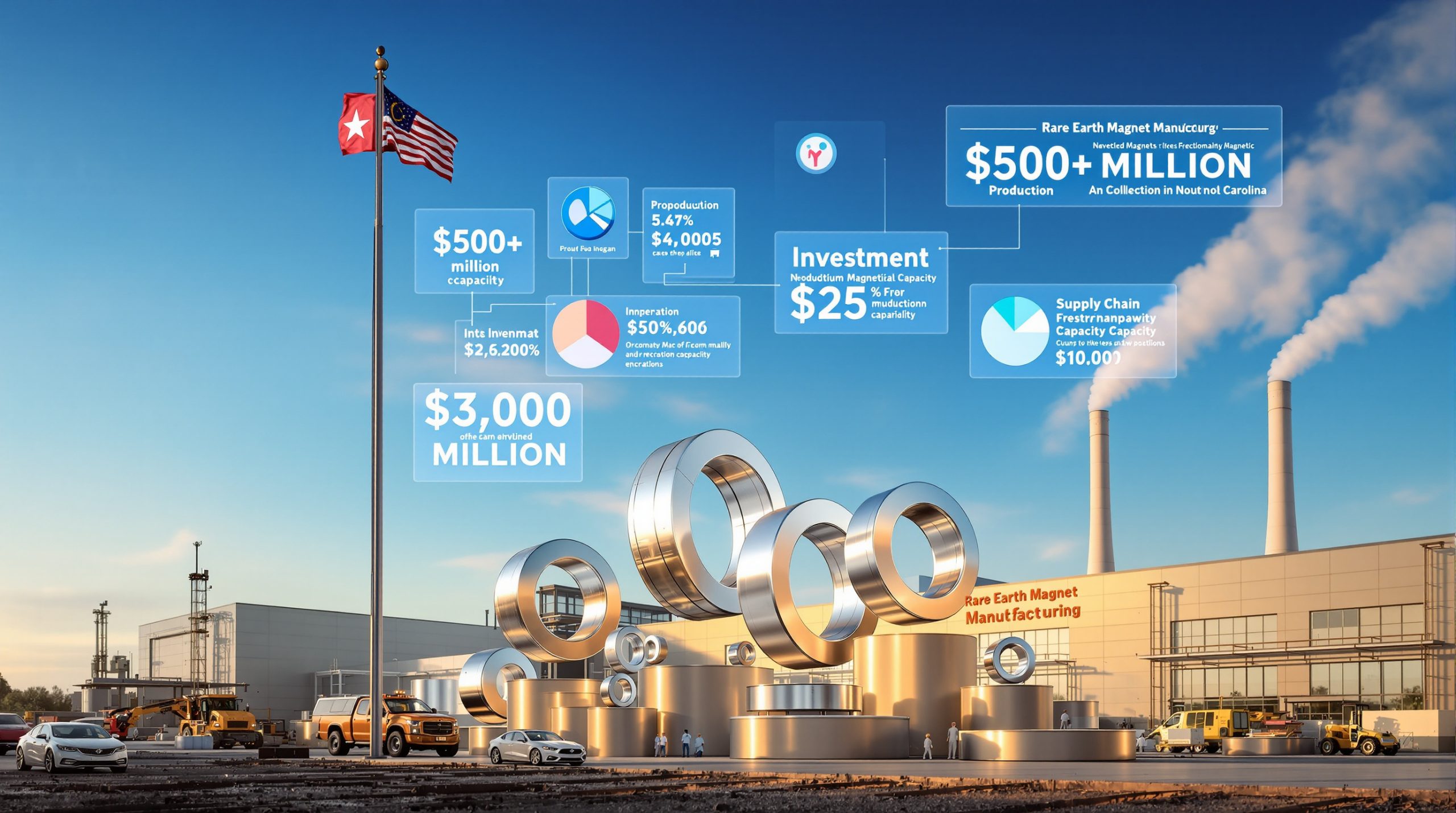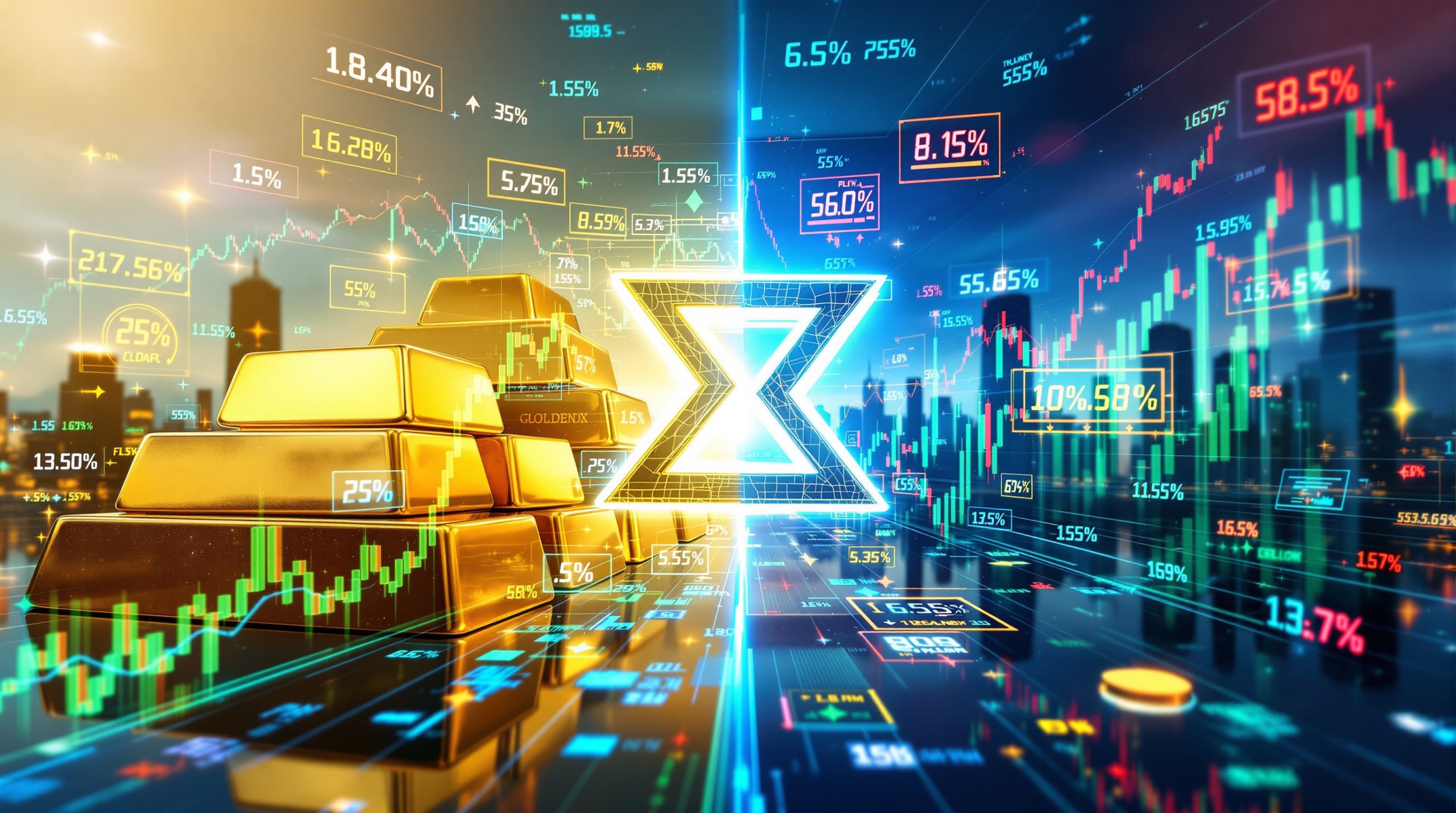Silver markets experienced their most dramatic single-session decline in six months on October 17, 2025, with prices plummeting over 6% to $50.96 per ounce as of 1:09 p.m. New York time. This substantial correction marked a significant shift in precious metals sentiment, ending a period of extraordinary momentum that had driven silver to multi-year highs. The magnitude of this silver price drop caught many market participants off guard, particularly given the metal's strong performance throughout 2025.
Trading volumes surged as investors scrambled to adjust positions, with the decline representing the steepest one-day fall since April 2025. Furthermore, market analysts attributed the sharp reversal to a confluence of factors, including profit-taking activity, shifting risk sentiment, and technical corrections following an extended rally period.
The sell-off demonstrated silver's inherent volatility characteristics, particularly during periods of rapid price appreciation. However, the correction appears to be linked to broader market dynamics affecting precious metals across the sector.
Why Did Silver Experience Such Dramatic Price Weakness?
Widespread Profit-Taking Following Rally Peaks
The primary catalyst behind the silver price drop was extensive profit-taking among investors who had benefited from the metal's impressive run-up throughout 2025. Market participants who had accumulated positions during earlier price levels chose to secure gains as silver approached technically overbought conditions.
Nicky Shiels, Head of Metals Strategy at MKS Pamp SA, noted that regional market dislocations were beginning to smooth out, creating conditions for pressure and profit-taking activity. This technical rebalancing contributed significantly to the downward momentum observed during the session.
Key Market Dynamics:
- Concentrated selling pressure from long-term holders
- Algorithmic trading systems triggering stop-loss orders
- Options market positioning amplifying directional moves
- Commodity fund rebalancing activities
London Silver Market Supply Normalisation
A historic supply squeeze that had been supporting London silver markets showed signs of alleviating, removing one of the key technical factors underpinning higher prices. As regional supply dislocations began normalising, speculative premiums that had developed during the shortage period started unwinding.
The London Bullion Market Association (LBMA) clearing system had experienced unprecedented tightness in physical silver availability, creating artificial scarcity that supported elevated pricing. Consequently, as this situation improved, market forces could operate more naturally, leading to price discovery adjustments.
Credit Quality Concerns Subsiding
Improved sentiment regarding US credit quality, particularly concerning regional banking sector stability, reduced demand for precious metals as defensive assets. Treasury yields rebounded as concerns over regional bank lending activity eased, making non-yielding assets like silver less attractive to yield-conscious investors.
This shift reflected broader confidence in the US financial system's resilience, encouraging capital allocation toward income-generating investments rather than safe-haven assets.
How Did Broader Economic Conditions Influence Silver?
Rising Treasury Yield Environment
The rebound in Treasury yields created a challenging environment for precious metals broadly. As yields increased due to improved confidence in US financial institutions, the opportunity cost of holding silver became more pronounced for income-focused investors.
Higher yields typically pressure precious metals prices by:
- Increasing the relative attractiveness of fixed-income securities
- Strengthening the US dollar through capital inflows
- Reducing inflation hedging demand
- Shifting institutional portfolio allocations
Reduced Trade Friction Concerns
Easing concerns about global trade tensions between China and the United States contributed to diminished haven demand for both gold and silver. As geopolitical tensions showed signs of moderating, investors became more willing to take risks in growth-oriented assets rather than defensive precious metals positions.
This geopolitical sentiment shift reflected in currency markets as well, with emerging market currencies strengthening against the dollar. In addition, the improving trade outlook reduced external demand for dollar-denominated precious metals.
Risk-On Market Rotation
Global equity markets experienced renewed optimism, drawing capital away from traditional safe-haven assets. Technology stocks, emerging market equities, and cyclical sectors attracted investor attention as risk appetite improved across international markets.
The current US economic environment has shown signs of stability, encouraging investors to rotate from defensive positions into growth-oriented assets.
Market Rotation Indicators:
| Asset Class | Performance Impact | Capital Flow Direction |
|---|---|---|
| Growth Equities | Strong inflows | Away from precious metals |
| High-Yield Bonds | Moderate inflows | Competing with silver |
| Emerging Markets | Significant inflows | Risk-on sentiment |
| Commodities | Mixed performance | Sector-specific factors |
What Are the Investment Implications for Silver Holdings?
Distinguishing Correction from Trend Reversal
The October silver price drop appears to represent healthy market consolidation rather than a fundamental shift in the metal's long-term trajectory. Several underlying factors continue supporting silver's investment thesis despite the sharp correction.
According to John Hathaway, Senior Portfolio Manager at Sprott, precious metals equities remain modestly valued despite strong gains in 2025. This suggests institutional investors continue viewing the sector favourably for longer-term positioning.
Continuing Bullish Fundamentals:
- Industrial silver demand remains robust across multiple sectors
- Global supply constraints persist in major producing regions
- Central bank monetary policies continue supporting precious metals
- Technological applications drive secular consumption growth
Strategic Portfolio Considerations
Different investor categories may approach the silver price drop with varying strategies based on their investment horizons and risk tolerance levels. Understanding these approaches helps contextualise market behaviour during volatile periods.
Investment Approach Matrix:
| Investor Profile | Potential Strategy | Risk Considerations |
|---|---|---|
| Long-term Accumulators | Maintain core positions | Focus on fundamental drivers |
| Tactical Traders | Monitor technical levels | Volatility creates opportunities |
| New Market Entrants | Gradual position building | Dollar-cost averaging benefits |
| Institutional Managers | Rebalancing activities | Regulatory compliance factors |
Market Psychology and Sentiment Shifts
The speed and magnitude of the silver price drop highlighted the metal's sensitivity to sentiment changes and technical factors. Understanding these psychological dynamics proves crucial for navigating precious metals markets effectively.
Investor behaviour during corrections often follows predictable patterns, with early sellers typically representing weak hands. However, stronger conviction holders view declines as accumulation opportunities.
How Did Other Precious Metals Perform Comparatively?
Synchronised Precious Metals Decline
The silver price drop occurred alongside broader precious metals weakness, with gold falling 3.0% during the same session. Platinum declined 6.68% to $1,637.45 per ounce, while palladium experienced an even sharper 9.12% drop to $1,527.75 per ounce.
This synchronised selling demonstrated sector-wide profit-taking rather than silver-specific fundamental concerns. The correlation patterns suggested institutional rebalancing activities affecting the entire precious metals complex. For instance, the recent gold price highs analysis showed similar volatility patterns.
Comparative Price Performance (October 17, 2025):
- Silver: -6.0% to $50.96/oz (spot pricing)
- Gold: -3.0% (spot pricing)
- Platinum: -6.68% to $1,637.45/oz
- Palladium: -9.12% to $1,527.75/oz
Silver's Unique Volatility Characteristics
Silver's larger percentage decline compared to gold reflected its typical behaviour during market stress periods. The metal's dual role as both precious metal and industrial commodity creates amplified volatility patterns during sentiment shifts.
Unlike gold, which primarily serves as a monetary metal and store of value, silver faces additional demand and supply dynamics from industrial applications. Furthermore, the gold-silver ratio analysis reveals unique price sensitivity to both financial market conditions and real economy factors.
Silver vs Gold Volatility Factors:
- Smaller market size amplifies price movements
- Industrial demand creates additional price sensitivity
- Higher beta correlation during risk-off periods
- Speculative positioning often more concentrated
What Technical Factors Influenced the Silver Price Drop?
Critical Support and Resistance Levels
The $50.96 level where silver found temporary support during the decline represents a crucial technical threshold for near-term price action. This level corresponds to previous consolidation areas and may serve as a foundation for potential rebounds or further declines.
Technical analysts often view such sharp corrections as necessary for market health, particularly following extended rally periods. The velocity of the decline suggested stop-loss orders were triggered across multiple price levels, accelerating the downward movement.
Volume Analysis and Market Participation
Trading volume during the silver price drop significantly exceeded normal daily averages, indicating broad market participation rather than isolated selling pressure. High-volume corrections often represent genuine sentiment shifts rather than technical manipulation.
The volume characteristics suggested both institutional and retail participation in the selling activity. Additionally, various market segments contributed to the overall price pressure, as reflected in silver market data.
Volume Indicators:
- COMEX silver futures volume exceeded daily averages
- Spot silver trading activity surged globally
- Options market activity increased substantially
- Physical silver markets experienced elevated turnover
Momentum and Oscillator Signals
Prior to the correction, silver had reached technically overbought conditions on multiple timeframes, suggesting a pullback was overdue from a purely technical perspective. Momentum oscillators had been displaying negative divergences, warning of potential weakness ahead.
These technical warning signs, combined with fundamental factors, created conditions conducive to sharp corrective moves. Professional traders often anticipate such corrections and position accordingly.
What Lies Ahead for Silver Market Direction?
Near-Term Price Outlook and Catalysts
Short-term silver price direction will likely depend on several key factors including Federal Reserve policy signals, economic data releases, and continued geopolitical developments. Market participants will closely monitor these variables for directional cues.
HSBC's recent forecast calling for gold to reach $5,000 in 2026, up from their revised 2025 average target of $3,455 per ounce, suggests continued institutional optimism for precious metals broadly. While this forecast specifically addresses gold, silver often benefits from positive precious metals sentiment.
Immediate Market Catalysts:
- Federal Reserve monetary policy communications
- US economic growth and inflation indicators
- China-US trade relationship developments
- Global manufacturing activity data
- Energy transition policy announcements
Long-Term Fundamental Drivers
Despite the sharp correction, several secular trends continue supporting silver's long-term investment case. The global transition toward renewable energy sources, electric vehicle adoption, and 5G infrastructure deployment all require substantial silver consumption.
Secular Growth Drivers:
- Solar photovoltaic panel manufacturing expansion
- Electric vehicle production scaling globally
- 5G telecommunications infrastructure buildout
- Industrial automation and electronics growth
- Medical and healthcare technology applications
Supply-Side Considerations
Global silver mine production faces ongoing challenges from resource depletion, environmental regulations, and operational complexities. Many primary silver mines operate at higher cost structures, creating natural price support levels.
Secondary silver supply from recycling and scrap sources provides some market flexibility. However, it cannot fully offset potential primary production shortfalls during periods of strong demand growth.
Understanding Silver's Market Correction Context
Historical Precedent for Sharp Corrections
Silver markets have historically experienced sharp corrections during longer-term bull markets, often followed by renewed upward momentum. The metal's volatility characteristics make such price movements relatively normal within broader trending periods.
Previous silver bull markets in 1979-1980 and 2010-2011 included multiple corrections exceeding 20% before reaching ultimate peak levels. Current correction magnitudes remain within historical ranges for precious metals cycles.
Institutional vs Retail Investor Behaviour
The silver price drop revealed different behavioural patterns between institutional and retail investors. While institutions often view corrections as rebalancing opportunities, retail investors may panic-sell during sharp declines.
Understanding these behavioural differences helps explain market dynamics during volatile periods and provides insights into potential price recovery patterns. Furthermore, the silver market squeeze phenomenon has highlighted these divergent approaches.
Global Economic Integration Effects
Silver's performance increasingly reflects global economic integration, with Chinese manufacturing demand, European green energy policies, and US technological innovation all influencing price dynamics simultaneously.
This integration creates both opportunities and vulnerabilities, as positive developments in any major region can support prices. Conversely, negative events can trigger coordinated selling pressure.
Key Insights for Silver Market Participants
The October 2025 silver price drop serves as a powerful reminder of precious metals' inherent volatility while highlighting the importance of risk management strategies. The correction appears driven by technical factors and profit-taking rather than fundamental deterioration.
Critical Takeaways:
- Technical Rebalancing: The 6% decline represented necessary consolidation after extended gains
- Sector-Wide Impact: Synchronised precious metals selling indicated broad rebalancing activities
- Fundamental Support: Long-term drivers including industrial demand growth remain intact
- Market Psychology: Sentiment shifts can trigger rapid price movements regardless of fundamentals
Metal traders are experiencing their most profitable year on record, with major trading houses like Glencore and Trafigura both tracking toward their best performance for metal trading activities. This suggests institutional confidence in commodity markets despite short-term volatility.
Strategic Considerations:
- Volatility creates both risks and opportunities for different investment approaches
- Dollar-cost averaging strategies may benefit from periodic corrections
- Technical analysis proves valuable for timing entry and exit points
- Fundamental analysis provides context for long-term positioning decisions
Market participants should view this correction within silver's broader multi-year trajectory, recognising that healthy markets require periodic consolidations to maintain sustainable upward momentum. The underlying factors supporting precious metals investment remain largely unchanged despite short-term price pressures.
Disclaimer: This analysis is for educational purposes and does not constitute investment advice. Precious metals markets involve substantial risks, and past performance does not guarantee future results. Readers should conduct their own research and consider consulting with qualified financial professionals before making investment decisions.
Are You Monitoring Silver Market Opportunities for Investment Gains?
Discovery Alert's proprietary Discovery IQ model provides instant notifications on significant ASX mineral discoveries, including precious metals companies positioned to benefit from silver market dynamics. Explore major mineral discoveries that have delivered exceptional returns, and begin your 30-day free trial today to identify actionable opportunities ahead of the broader market.




